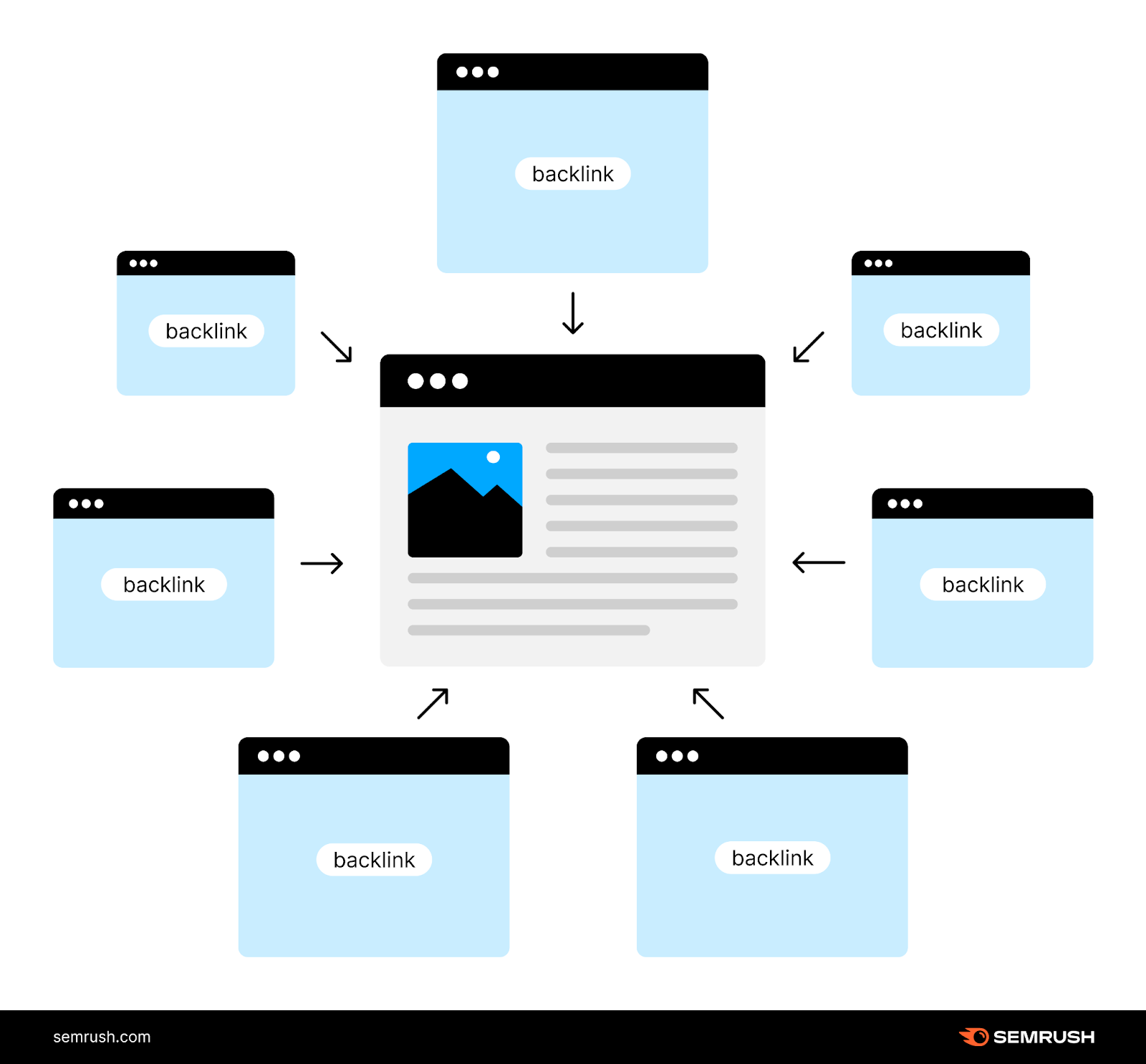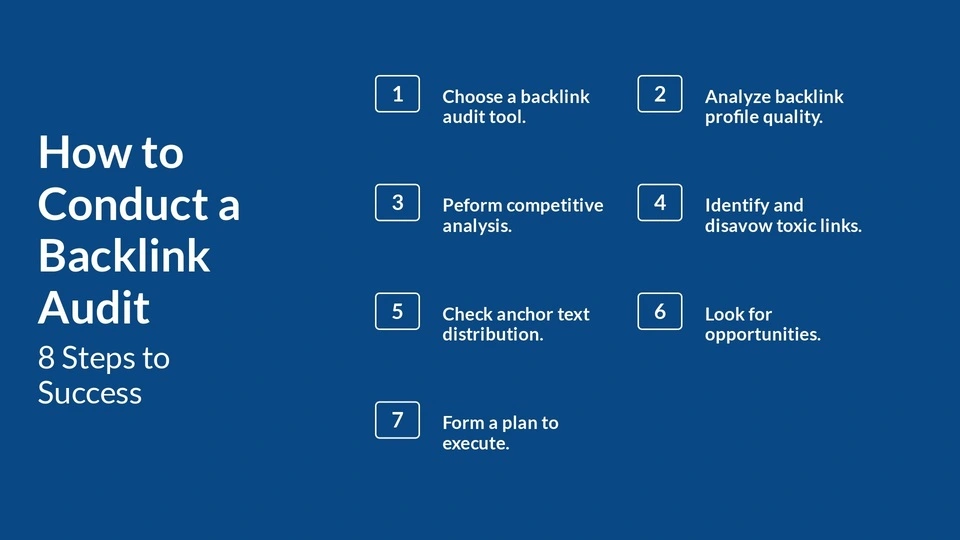Backlinks are crucial for SEO success. They help improve your website’s authority.
Doing a backlink audit allows you to see which links help or hurt your site. This process involves analyzing your links to ensure they boost your search engine ranking. It’s like a health check for your website. Knowing how to analyze these links is vital.
You can identify toxic links that harm your SEO. Also, you can find good links to keep and build on. With a proper backlink audit, you keep your site strong and competitive. So, let’s dive into how you can analyze your links effectively.
Introduction To Backlink Audits
A backlink audit helps identify and analyze the links pointing to your website. It focuses on finding quality backlinks and removing harmful ones. This process improves your site’s search engine ranking and overall performance.
Backlinks play a crucial role in SEO. They help search engines determine the relevance and authority of your site. A backlink audit is a process to analyze your site’s backlinks.Importance Of Backlinks
Backlinks act as votes of confidence from other websites. They signal to search engines that your site is credible. Quality backlinks can improve your search engine rankings. They can drive more organic traffic to your site. Poor quality backlinks can harm your SEO efforts. They can lead to penalties from search engines.Goals Of A Backlink Audit
Identify all backlinks pointing to your site. Assess the quality and relevance of each backlink. Remove or disavow harmful links. Strengthen your backlink profile. Improve your site’s SEO performance. Ensure your site follows search engine guidelines. A thorough audit can enhance your site’s credibility. It can also boost your search engine rankings. “`
Credit: backlinko.com
Preparing For A Backlink Audit
Preparing for a backlink audit is a crucial step in ensuring your website’s health. It helps identify harmful links and strengthens your SEO strategy. To start, you need the right tools and data. This process may seem overwhelming, but with the right approach, it becomes manageable.
Tools Required
To conduct a backlink audit, you need several tools. These tools help you gather and analyze link data. Some popular options include Ahrefs, SEMrush, and Moz. These tools provide insights into your backlink profile. They show you which links are beneficial and which are harmful.
Gathering Link Data
Once you have the tools, the next step is gathering link data. This involves collecting information on all the backlinks pointing to your site. Use the chosen tool to generate a comprehensive list of backlinks. This list will include details such as the source URL, anchor text, and link status.
Make sure to export this data into a spreadsheet. This makes it easier to sort and filter the information. Look for any patterns or anomalies in the data. Identifying toxic links early helps in taking corrective actions.
Identifying Good And Bad Links
Conducting a backlink audit is crucial for any website aiming for high search engine rankings. An essential part of this process is identifying good and bad links. Good links can boost your SEO, while bad links can harm your site’s reputation.
Characteristics Of Quality Links
To determine if a link is good, look for the following key characteristics:
- Relevance: The link comes from a site related to your niche.
- Authority: The linking site has high domain authority.
- Anchor Text: The anchor text is natural and descriptive.
- Traffic: The linking site receives a good amount of traffic.
- Editorially Placed: The link is placed within the content, not the footer or sidebar.
Signs Of Toxic Links
On the flip side, bad links exhibit certain toxic characteristics:
- Irrelevance: The link comes from a site unrelated to your niche.
- Low Authority: The linking site has low domain authority or is penalized.
- Spammy Anchor Text: The anchor text is keyword-stuffed or unnatural.
- Link Farms: The link is from a site that exists solely for link building.
- Paid Links: The link is clearly marked as paid or sponsored.
Use these guidelines to evaluate your backlinks. Identifying good and bad links can significantly impact your site’s SEO performance.
Analyzing Link Quality
Analyzing link quality is a crucial part of any backlink audit. It helps identify valuable links and remove harmful ones. This step ensures your site maintains a healthy backlink profile. Let’s dive into the key aspects of analyzing link quality.
Domain Authority
Domain Authority (DA) is a metric developed by Moz. It predicts a website’s ranking potential on search engines. Higher DA links are more valuable for your site. Check the DA of each linking domain. Use tools like Moz, Ahrefs, or SEMrush. Aim for links from sites with a DA of 30 or higher.
Relevance And Context
Relevance and context are equally important. A link from a relevant site carries more weight. Ensure the linking site relates to your niche. For example, if you run a fitness blog, links from health sites are valuable. Context within the linking page matters too. The surrounding text should be related to your content. This increases the link’s value and credibility. Use tools to analyze the context of each backlink.
Evaluating Anchor Texts
Evaluating anchor texts is a crucial part of a backlink audit. Anchor text is the clickable text in a hyperlink. It helps search engines understand the content of the linked page. Proper use of anchor texts can improve your SEO. Incorrect use can harm your rankings.
Types Of Anchor Texts
There are different types of anchor texts. Understanding them helps in evaluating your links.
Exact Match: This anchor text uses the exact keyword you want to rank for. For example, “SEO tips” links to a page about SEO tips.
Partial Match: This includes a variation of the keyword. For example, “best SEO tips” links to the same page.
Branded: This uses the brand name. For example, “Google” links to the Google website.
Naked Link: This shows the URL itself. For example, “www.example.com” links to the website.
Generic: This uses common phrases. For example, “click here” or “read more.”
LSI (Latent Semantic Indexing): These are synonyms or related terms. For example, “search engine optimization” links to an SEO page.
Best Practices For Anchor Texts
Using anchor texts correctly can boost your SEO. Here are some best practices.
Be Relevant: Ensure the anchor text matches the content of the linked page. Irrelevant links can confuse readers and search engines.
Use Natural Phrases: Avoid keyword stuffing. Use natural language that fits the context.
Mix It Up: Use a variety of anchor text types. This creates a natural link profile.
Limit Generic Texts: Avoid overusing generic phrases like “click here.” They do not provide context to search engines.
Check Competitors: Look at how your competitors use anchor texts. Learn from their strategies.
Monitor Regularly: Regularly check your anchor texts. Update them to maintain relevance and effectiveness.

Credit: www.semrush.com
Detecting Link Schemes
Backlinks are essential for SEO. But not all backlinks are good. Some may harm your website’s ranking. Detecting link schemes is crucial. This ensures your website remains in good standing with search engines.
Common Link Schemes
Link schemes are practices that manipulate links to improve a site’s ranking. Here are some common link schemes:
- Paid Links: Buying links to boost ranking.
- Link Exchanges: Trading links with other websites.
- Low-Quality Directories: Getting links from spammy directories.
- Article Marketing: Using the same content on different sites.
- Link Farms: Groups of websites linking to each other.
- Hidden Links: Links hidden within the content or code.
Be cautious of these tactics. They can lead to penalties from search engines.
Avoiding Penalties
Search engines like Google have strict guidelines. Violating these can result in penalties. To avoid penalties, follow these tips:
- Audit Your Backlinks: Regularly check your backlinks. Use tools like Ahrefs or SEMrush.
- Disavow Bad Links: Use Google’s Disavow Tool to remove harmful links.
- Focus on Quality: Get links from reputable sites.
- Create Valuable Content: Offer content that others want to link to.
- Avoid Automated Tools: Do not use tools that generate backlinks automatically.
Maintaining a clean backlink profile is vital. It helps in ranking better and avoiding penalties.
Removing Or Disavowing Bad Links
Removing or disavowing bad links is crucial for maintaining a healthy backlink profile. Bad links can harm your website’s SEO performance. They might come from spammy, irrelevant, or low-quality sites. Identifying and addressing these links can improve your site’s ranking and reputation.
Contacting Webmasters
Start by identifying the bad links pointing to your site. Use tools like Ahrefs or SEMrush. Once identified, find the contact information of the webmasters. Send a polite email requesting the removal of the link. Explain why you want it removed. Provide the exact URL where the link is located. Some webmasters might respond quickly. Others may take time or not respond at all.
Using Google’s Disavow Tool
If contacting webmasters does not work, use Google’s Disavow Tool. This tool tells Google to ignore certain links to your site. Create a text file listing the URLs or domains you want to disavow. Use the proper format, as Google suggests. Upload this file through the Disavow Tool in Google Search Console. This process can take some time to show results. Be patient and monitor your backlink profile regularly.

Credit: www.vazoola.com
Monitoring And Maintaining Backlinks
Monitoring and maintaining backlinks is crucial for your website’s SEO health. It ensures your link profile remains strong and clean. Regular audits and tracking link performance help identify and address potential issues. This section will guide you through these essential processes.
Regular Audits
Conducting regular backlink audits helps you stay on top of your link profile. A thorough audit allows you to:
- Identify low-quality or spammy links
- Check for broken or lost links
- Analyze the anchor text distribution
Use tools like Ahrefs, SEMrush, or Moz to perform these audits. Regular checks (monthly or quarterly) keep your backlinks in good shape. It also helps you spot trends and take corrective actions quickly.
Tracking Link Performance
Tracking the performance of your backlinks is essential for understanding their impact. Here’s what you should monitor:
| Metric | Description |
|---|---|
| Referral Traffic | Check the amount of traffic coming from each backlink. |
| Domain Authority | Monitor the authority of the linking domains. |
| Anchor Text | Ensure the anchor texts are relevant and varied. |
Use Google Analytics to track referral traffic. Link tracking tools can help with domain authority and anchor text analysis. These metrics provide insights into the quality and relevance of your backlinks.
By keeping a close eye on these metrics, you can maintain a healthy backlink profile. This practice will boost your website’s search engine rankings and visibility.
Frequently Asked Questions
What Is A Backlink Audit?
A backlink audit is a process of analyzing your website’s backlinks. It helps identify harmful links and improve SEO performance.
Why Is Backlink Analysis Important?
Backlink analysis is important for maintaining a healthy link profile. It helps detect spammy links that could harm your site’s ranking.
How Do You Perform A Backlink Audit?
To perform a backlink audit, use tools like Ahrefs or SEMrush. Analyze the quality and relevance of each backlink.
What Are Toxic Backlinks?
Toxic backlinks are harmful links from low-quality or spammy websites. They can negatively impact your website’s search engine ranking.
Conclusion
Analyzing your backlinks is crucial for SEO success. Regular audits help identify bad links. Remove harmful links to improve your site’s health. Focus on quality, not just quantity. Effective link management boosts your rankings. Stay proactive with your backlink strategy.
This ensures sustained growth and visibility. Remember, a healthy backlink profile is key to online success. Keep refining and monitoring your links. This will lead to better search engine performance. Happy auditing!